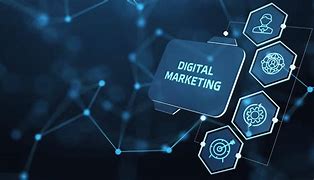In today’s fast-paced, connected world, businesses no longer rely solely on billboards, flyers, or radio ads to reach their audience. Instead, they’re turning to digital marketing — a powerful way to connect with customers online and grow brands faster and smarter than ever before.
But what exactly is digital marketing? Let’s break it down.
What is Digital Marketing?
Digital marketing refers to all forms of marketing that use digital tools, platforms, and technologies to promote products or services online. It’s about using the internet and digital devices (like smartphones and computers) to connect with your audience wherever they are.
Why Is Digital Marketing Important?
The way people shop, research, and make buying decisions has changed. With billions of people using the internet daily, digital marketing allows businesses to:
-
Reach a global audience from anywhere
-
Target specific people based on age, interests, or location
-
Track and analyze performance in real-time
-
Communicate directly with customers
-
Save costs compared to traditional advertising
Types of Digital Marketing Channels
Here are the most popular and effective types of digital marketing:
1. Search Engine Optimization (SEO)
This helps your website show up on Google when people search for related keywords. For example, if someone searches “best phones in Nigeria,” SEO helps your tech website rank high in the results.
2. Content Marketing
This is all about creating useful content like blogs, videos, or infographics that provide value to your audience — not just selling. It's great for building trust and long-term relationships.
3. Social Media Marketing
Platforms like Facebook, Instagram, X (Twitter), LinkedIn, and TikTok are powerful for promoting your brand, engaging your audience, and building a community.
4. Email Marketing
This involves sending personalized emails to customers and prospects. Think of newsletters, promotions, product updates, or abandoned cart reminders.
5. Pay-Per-Click Advertising (PPC)
With PPC ads (like Google Ads or Facebook Ads), you pay each time someone clicks on your ad. It’s quick, measurable, and great for targeted campaigns.
6. Affiliate Marketing
You pay others (affiliates) to promote your products and give them a commission for every sale they drive. It’s performance-based and low-risk.
7. Influencer Marketing
This involves partnering with influencers who already have loyal followers. It works especially well for lifestyle, beauty, fashion, and tech brands.
8. Mobile Marketing
Mobile-first strategies like SMS campaigns, app notifications, or mobile-friendly websites are essential as more people use phones to browse and shop.
Main Goals of Digital Marketing
Every digital marketing strategy aims to:
-
Increase brand visibility
-
Attract more website traffic
-
Generate leads and sales
-
Build loyal customer relationships
-
Improve brand reputation
The Power of Analytics
One of the biggest advantages of digital marketing is that everything can be tracked. With tools like Google Analytics, Meta Ads Manager, or HubSpot, you can see exactly how many people visited your site, where they came from, what they clicked on, and whether they bought anything.
This helps businesses make smarter decisions and improve over time.
Final Thoughts
Digital marketing isn’t just a trend — it’s a necessity for modern businesses. Whether you’re running a small shop in Lagos or launching a global brand, digital marketing gives you the tools to reach your audience, tell your story, and grow your business.
The best part? You can start small, learn along the way, and scale up as you go.






